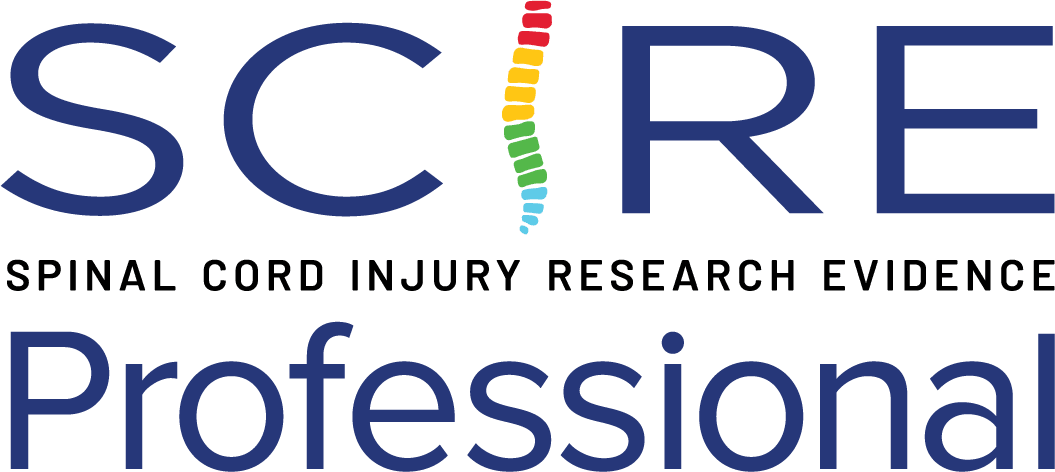- It is a performance measure, designed to measure functional limitations, and assess the amount of difficulty experienced in performing specific actions (involving arms and hands) in individuals with tetraplegia.
Clinical Considerations
- While developed initially for adults, research supports the use of the CUE-T in people older than 6 years of age.
ICF Domain
Activity ▶ Mobility
Administration
-
Two examiners are required to conduct this test. Examiners are responsible for counting repetitions, ensuring appropriate technique, and timing each task. If it is not possible to have two examiners, the test should be videotaped and repetitions counted afterwards.
-
For each item, the examiner needs to explain and demonstrate the task to each participant. Practicing each task by the participant should be allowed before testing it.
- Takes about 30 minutes to complete.
Number of Items
17 items.
Equipment
- Timer
- Yardstick
- Round marker
- Wood block with L-bracket
- Weights (1/2 kg, 1 kg, 2 kg)
- Nonslip mat
- Clamp
- Height-adjustable table
- Hand-held dynamometer and pinch dynamometer
- Plastic container with lid
- Credit card
- Pencil
- Calculator,
- Cell phone.
For a detailed list of equipment, consult the CUE-T manual.
Scoring
- Raw scores are recorded as indicated on the data collection sheet. These scores will be converted to a five-point scale (from 0 to 4).
-
The total score ranges from 0 to 128 points, including scores for the hand (36 points per side) for fine movements and the side (60 points per side), excluding bimanual movements.
Languages
English.
Training Required
Does not require advanced training.
Availability
The Capabilities of Upper Extremities Test (CUE-T) worksheet can be found for free here.
# of studies reporting psychometric properties: 5
Interpretability
- Higher scores reflect better function.
- CUE-T total = 7.7
- CUE-T hand = 2.0
- CUE-T side = 3.7
- CUE-T total = 3.4
- CUE-T hand = 1.1
- CUE-T side = 1.6
(Jimbo et al. 2023; n=52; 45 males, 7 females; mean (SD) age: 56.8 (13.5) years; ASIA A-D; level of injury: C1-T1; subacute SCI)
SEM: Not established in SCI.
MDC: Not established in SCI.
Typical Values
Cutoff values (CUE-T score by points) for independence in activities of daily living:
- Feeding: 37
- Bathing the upper body: 91
- Bathing the lower body: 90
- Dressing the upper body: 82
- Dressing the lower body: 81
- Grooming: 60
(Jimbo et al. 2024; n=71; 60 males, 11 females; median age: 61.0 years; ASIA A-D; level of injury: C1-T1; subacute SCI)
Reliability – High
- Internal consistency for the CUE-T is High (Cronbach’s α = 0.96)
(Marino et al. 2012; n=30; 30 males; mean age: 44.8 years; 10 incomplete and 20 complete injury)
Validity – High
- High Spearman’s ρ correlation with GRASSP subtests (All P<.0001):
Sensation total (R+L): ρ = 0.77
Strength total (R+L): ρ = 0.76
Prehension performance total (R+L): ρ = 0.83
(Dent et al. 2018; n=39; mean age: 12.9 (all < 18 years); tetraplegia)
- High correlation with ASIA Upper Extremity Motor Score:
r = 0.83 – 0.91
(Marino et al. 2012; n=30; 30 males; mean age: 44.8 years; 10 incomplete and 20 complete injury)
(Marino et al. 2015; n=50, 36 male, 14 females; mean (SD) age = 48.1 (18.2) years); 20 motor complete (ASIA A-B), 30 motor incomplete (ASIA C-D))
- High correlation with SCIM:
SCIM Self-Care Score: r = 0.70
SCIM Mobility Score: r = 0.55
(Marino et al. 2015; n=50, 36 male, 14 females; mean (SD) age = 48.1 (18.2) years; 20 motor complete (ASIA A-B), 30 motor incomplete (ASIA C-D))
Responsiveness
Effect Size:
- Standardized response mean (SRM) in subacute period after SCI: 1.07
(Marino et al. 2018; n=69, mean (SD) age: 41.9 (18.1) years, ASIA A-D), acute and chronic)
Floor/Ceiling Effect
Not established in SCI.
Reviewers
Dr. William Miller, Dr. Carlos L. Cano-Herrera
Date Last Updated
31 December 2024
Jimbo K, Miyata K, Yuine H, Takahama K, Yoshimura T, Shiba H, Yasumori T, Kikuchi N, Shiraishi H. Verification of the minimal clinically important difference of the Capabilities of Upper Extremity Test in patients with subacute spinal cord injury. J Spinal Cord Med 2023; 6:1-8.
https://pubmed.ncbi.nlm.nih.gov/37930635/
https://pubmed.ncbi.nlm.nih.gov/38886575/
https://pubmed.ncbi.nlm.nih.gov/29997427/
Marino RJ, Patrick M, Albright W, Leiby BE, Mulcahey M, Schmidt-Read M, Kern SB. Development of an objective test of upper-limb function in tetraplegia: The capabilities of upper extremity test. Am J Phys Med Rehabil 2012; 91: 478-486.
https://www.ncbi.nlm.nih.gov/pubmed/22469875
Marino RJ, Kern SB, Leiby B, Schmidt-Read M, Mulcahey MJ. Reliability and validity of the capabilities of upper extremity test (CUE-T) in subjects with chronic spinal cord injury. J Spinal Cord Med 2015; 38: 498-504.
https://www.ncbi.nlm.nih.gov/pubmed/25297342
Marino RJ, Sinko R, Bryden A, Backus D, Chen D, Nemunaitis GA, Leiby BE. Comparison of Responsiveness and Minimal Clinically Important Difference of the Capabilities of Upper Extremity Test (CUE-T) and the Graded Redefined Assessment of Strength, Sensibility and Prehension (GRASSP). Top Spinal Cord Inj Rehabil. 2018; 24: 227-238. doi: 10.1310/sci2403-227.
https://pubmed.ncbi.nlm.nih.gov/29997426/
